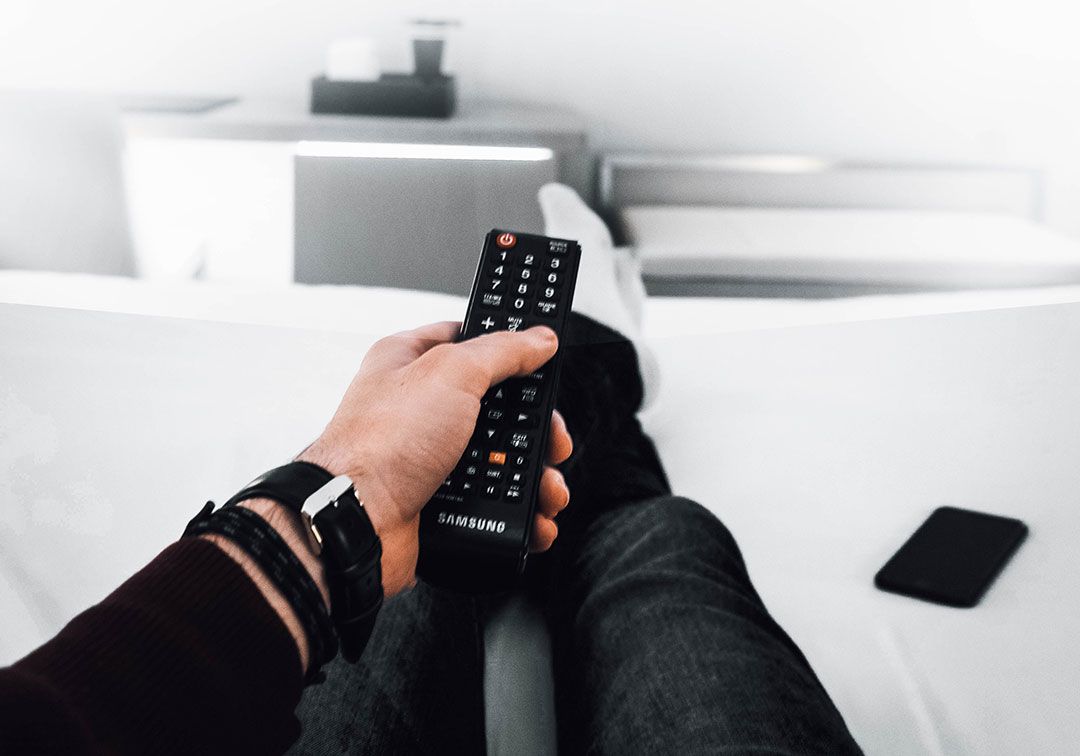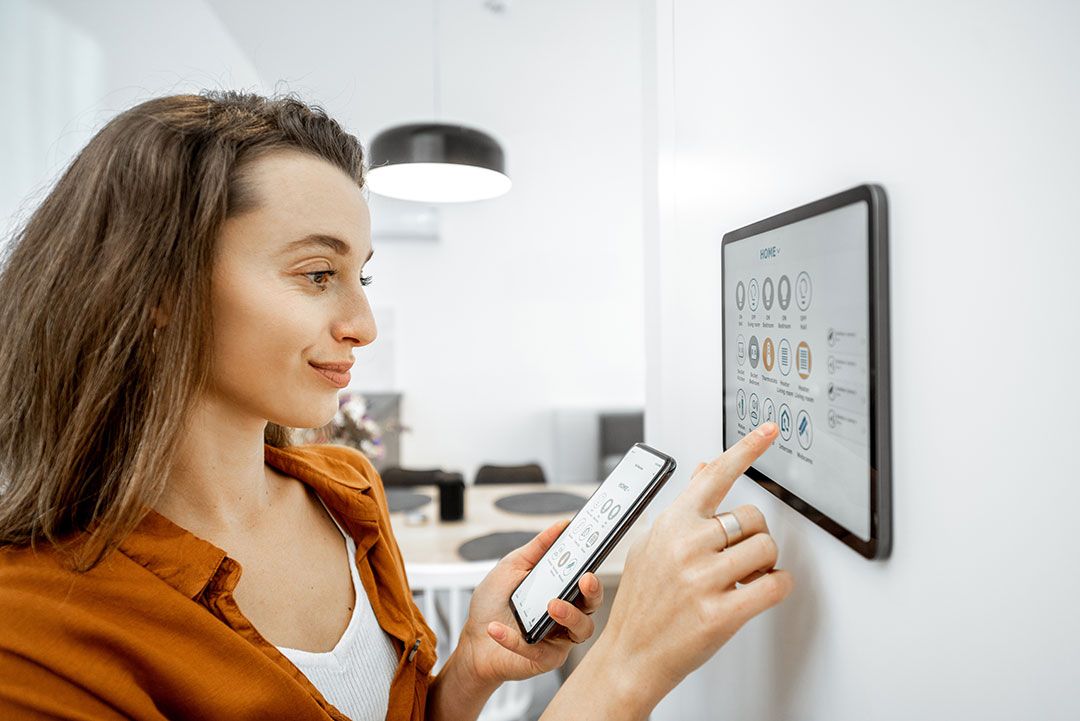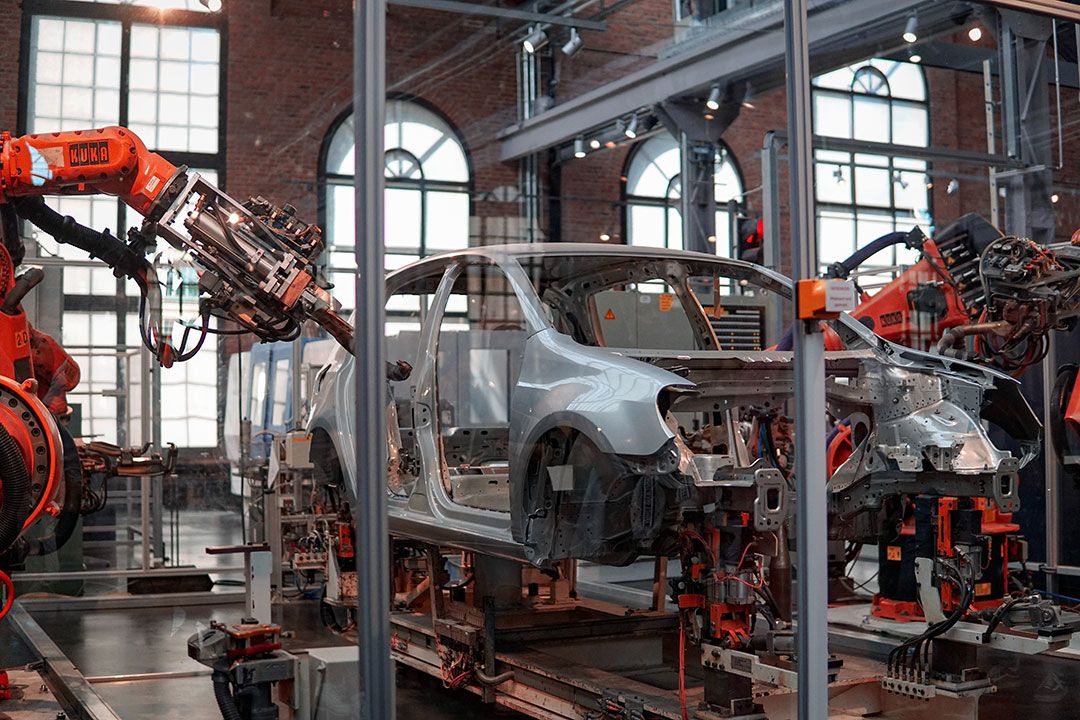Real-world use cases for batteryless IoT sensors


The Internet of Things took an awesome thing - the internet - and made it indescribably better by freeing it from the confines of big-bulky devices. Today, thanks to IoT technology, we are able to deploy highly specialised node devices that are tailor-made for specific operational needs.
If we’re being technical, these millimetre-scale IoT chips are computers - And not in an obnoxiously pedantic way either - in quite a real sense, that’s what they are. That’s probably the best way to conceive of the internet of things. It’s not the internet part that’s changed, it’s the things part. We’ve just managed to work out how to mass-produce nano-scaled computing devices very cheaply - this, with modern spread of data coverage, means that we’re able to get a lot more computing done, over larger swathes of the earth, for not a lot of money. What’s not to love eh?
Semiconductors have practically never been cheaper to manufacture than they are today. But this has already more or less been the case for a number of years now. So, what’s changed? Energy harvesting has emerged as the go-to power solution for wireless sensors. IoT has embraced battery-less in a massive way.
Businesses today are able to harness the power of IoT and cloud computing towards greater efficiency and therefore, lower costs. IoT-based setups like smart farms and smart factories deploy hundreds or even thousands of wireless sensors, often at considerable distances from one another. Think of an operation that is spread out over a considerable space of land - say, a tea farm in the hills of Southern India or an armed forces base spanning thousands of acres.
Usually, these properties end up deploying thousands of wireless IoT sensors in various locations. Often, these sensors are located in the remotest of places - inaccessible for the most part. Think on the insides of large factory machinery, on mountain tops, underwater, on treetops etc - And that’s by design. After all, this is the proposition that IoT is making to the business owner in the first place.
The proposition is essentially - hey here’s a system that will be able to give you access to Information that offers you, the business owner, a level and scale of insight that can transform your business by eliminating wastage at a granular level and streamlining yourself. So, understandably, when this solution then asks the owner to sign up for periodic battery checks and routine maintenance, it’s just replacing one unwieldy solution with another one. It’s entirely another matter that even with these limitations in place, quite a few major companies have adopted IoT digitisation quite bullishly.
However, the true challenge for IoT will be to make a compelling proposition to small and medium-sized businesses. Businesses that can’t buffer losses in one location with reserves from a more lucrative location. It may well be fair to say that the battery problem has been holding the growth and penetration of IoT technology.
Energy harvesting offers the industry a truly compelling alternative to batteries. At least as far as MCUs and wireless sensors are concerned. These units usually don’t need more than a few milliwatts at a time. A milliwatt is a thousandth of a watt. Today’s energy harvesting technologies are able to harvest enough ambient energy to make IoT nodes 100% power autonomous - i.e 100% off the grid!
Batteryless sensors have emerged as the gold standard for ultra-low-power wireless communication devices. They open up a level of functionality that simply would not have been possible for battery-powered IoT devices. Batteryless sensors can be deployed in the most inaccessible of places and largely forgotten about. They don’t need routine battery checks or replacements.
No wonder then, that the IoT industry is pouring hundreds of millions of dollars into energy harvesting technology. A number of promising solutions based on technologies like RF energy harvesting, piezoelectric energy harvesting and solar energy harvesting have entered the market. Edge devices are termed as such because they are meant to be deployed in far-flung areas - the edge as it were. With energy harvesting technology, we are able to fashion edge devices that are truly able to fend for themselves in the wild.
We have chips today that will allow for truly wireless solutions. Solutions based on energy harvesting technology - i.e drawing energy from the surrounding environment. It’s not very hard to imagine the huge implications - with batteryless sensors, you can have truly untethered solutions - solutions that will be designed from the ground up with a new level of freedom. They make for solutions that are bespoke - expertly tailored for their purpose, without being encumbered by finding a way to fit in a battery.
This means that the manufacturer saves quite a bit of cash on his bill of materials. It is only reasonable then that he would slash his asking price of the customer, in order to make a more compelling proposition. It’s not just the bill of materials though - over the years, batteryless edge devices will save the business a lot of resources by reducing waste, eliminating periodic maintenance and optimising production. But perhaps more importantly than all these benefits, batteryless IoT devices are significantly more eco-friendly than their battery-powered counterparts. They make for a smaller ecological footprint and don’t rely on child labour, to say the least.
Interesting Use Cases for Batteryless IoT
It’s all well and good to pontificate on the virtues of batteryless sensors over traditional IoT devices - but it might be understandable if you still aren’t getting what all the fuss is about. After all, all this tech jargon can be quite strange and alien-sounding. You might just be wondering -
Alright. I guess I get that this energy harvesting technology is great and all - but how is it going to change the life around me?
In this section, we’ve going to highlight some of the industries that we think are poised to be radically transformed by batteryless IoT technology.

1. Healthcare
Think about a device that looks no different to any old band-aid - an unassuming plaster by the look of it - but invisible to the eye, the plaster has a tiny little IoT chip in it that can, when you put it on your skin, measure your core body temperature accurately and send it to your phone in real time - sounds a bit crazy and futuristic right?
Not at all. This is exactly the kind of solution that is going to become more and more commonplace in the healthcare industry, in the coming years. We will see more and more companies coming forward with their own take on continuous monitoring devices.
The idea is essentially simple - stick a self-powered, batteryless IoT chip into an unassuming little object - and boom! You have successfully made said object smart. The healthcare industry is smacking its lips at the tremendous scale and array of possibilities that IoT technology promises.
Products like continuous glucose monitoring (CGM) have become quite popular in the market already. They are essentially proof-of-concept devices that serve to highlight just how much scope there is for innovation in this space.
For very obvious reasons, batteries are not the best solution for healthcare-focused IoT devices - batteries tend to run out - which makes them particularly unreliable in the context of health monitoring - think of a fall detection system that uses IoT sensors to check for falls among elderly people and alert their family members if they do - this kind of a system is no good if it asks your grandpa to be meticulous with his battery changes. Think of an apple watch or any other high-end tracking device - they come with incredible features today - some of these models can even warn you and your physician of an impending or ongoing heart attack - that's got to be proper value right there? I mean, a device that can potentially save your life - that’s pretty great. But, for all its sophistication, if this wearable device is powered by a battery, there is always the chance that it could be off when you most need it to be on.
That’s why batteryless IoT is so exciting for healthcare. Batteryless solutions make for better reliability, more physician confidence and therefore, better health outcomes.
IoT-based healthcare has been such a hotbed of innovation in the last few years that it has spawned a dedicated name for IoT devices with a medical bent - IoMT or the Internet of Medical Things. Despite the copious red-tape that inevitably surrounds the healthcare industry, many top players are very keen on storming the market with health-focused IoT devices, particularly targeting an increasingly health-conscious millennial demographic.
With wireless IoT sensors, we will have health devices that are all the more reliable and functional. As we start to expand our capabilities in this arena, we will be able to offer physicians possibilities that they couldn’t have even conceived of 20 years ago - With remote monitoring devices, doctors can keep a close eye on the health of their patients, without them having to make arduous journeys. Just think about the sheer number of elderly and immobile people that have to make frequent visits to the hospital - with Bluetooth 5 coming through as well, we are now able to design solutions that at least cut down on the requirement for in-person visits to the hospital. More of the healthcare process can be completed online - something that has proved a big blessing for many an aged household during the pandemic!
Information about the patient’s health - detailed analytics can be made available to both the patient and the doctor in a matter of minutes, right on their smartphones! Medicine may look very different indeed, a few years from now.

2. Hotels and Restaurants
Among industries that have literally been ravaged by the ongoing coronavirus pandemic, the travel industry and the hospitality industry have possibly taken the worst hit. More than ever before, hotels and restaurants are busy searching for solutions that will allow them to cater to their guests’ needs even better, while preferably cutting costs even further.
To be fair, the sort of miracle that this industry is expecting is not likely to be realistic - nevertheless, with batteryless IoT, hotels can offer their customers just that little bit extra. For instance, think about the door card readers that hotels use - they are usually battery powered. With just existing self-powered IoT technology, it is possible to design door card readers that are batteryless. For a large chain of hotels with properties scattered across the globe, that is going to mean millions of dollars in savings!
Thousands of battery replacements a year over hundreds of thousands of doors is super intensive on labour and costs chains more than they’d like to pay. With energy harvesting enabled node devices, they will be able to clamp down on these avoidable drains on valuable capital.

3. Smart cities
This is an example where the benefits of batteryless nodes are quite evident even before we get into the brass tacks of any particular use case. The scale at which smart city networks operate exposes battery-powered IoT for the makeshift solution that it is.
To understand this in context, let’s revisit what a smart city is - Smart cities are based on a fairly simple premise - cities are large spaces that large numbers of people share. Any situation that puts people in tight spaces together puts a lot of pressure on resources and can be hard to organise.
What if we could use the power of big data to organise cities in a way that is optimal for the population? What if we allow for citizens to interact with their city in a hands-on fashion?
So what does this entail? For the most part, it involves sensors being embedded in city structures that come in frequent contact with people - traffic signals, pedestrian crossings, public transport, water fountains etc. These sensors collect valuable data from their surroundings in real-time. These troves of data offer administrative entities the ability to make timely interventions aimed at promoting ease of life and livability. Smart cities are going to play an increasingly important role in organising our major cities in the near future. With a burgeoning global population, there is no better time than now to invest in technologies that make for safer and cleaner cities.
Now, onto our earlier point - with a smart city network that could realistically include hundreds or even thousands of wireless sensors placed at various strategic locations in the city, it’s not hard to see why batteries are simply no solution at all.

4. Household electronics
The number of electronic devices owned by the average household has gone up dramatically in the past decade or so - it is not uncommon for a median income household in the developed world to have up to 10 internet-connected devices at any given point in time.
Now granted, your Ipad isn’t going to be powered by ambient energy anytime soon. But, there are a number of other devices and peripherals that can. For example, let’s take the case of TV remote control units. For the consumer, the need to replace their remote’s batteries periodically is a rather annoying point of friction in his experience.
The remotes of tomorrow are going to be batteryless. They will use self-powered SOCs in them which will completely eliminate the need for batteries. They will be able to harness the energy wasted by your electronic devices (i.e RF energy) and use it to communicate with your device.
Pretty neat huh?

5. Smart homes
With IoT technology, we are able to assemble smart homes quite easily and cheaply these days. Just a few years ago, AI-powered climate control systems and smart lighting systems were frippery excesses reserved for the ultra-rich.
Today however, you can get your home decked out with a dozen or so IoT-enabled devices for just a few hundred dollars. With this kind of a setup, you will be able to interact with your home in a truly immersive way.
With batteryless node devices, you will be able to run your devices for their entire lifetimes without needing much in the way of maintenance.

6. Retail Outlets
Iot technology has caused some pretty seismic changes in the retail industry. Thanks to IoT nodes getting cheaper, retailers have been able to come up with some pretty ingenious methods to harness the power of high-speed wireless connectivity.
Retailers around the world are starting to opt for electronic shelf labels (ESL) in place of paper tags. One big advantage that these have over their predecessors is that updates can be made to large quantities of products simultaneously. However, as of today, many of these ESL systems continue to be battery powered which is often a headache for the end consumer.
With energy harvesting, retailers can easily set up Bluetooth-5 enabled labels that are 100% maintenance-free.

7. Sports Venues
Sports stadiums typically tend to be massive structures. The nightmarish experience that these venues have with match days is not well known to outsiders. Managing tens of thousands of excited people is not easy on the best of days - let alone days with inclement weather etc.
Stadiums have come to rely on electronic badges to help patrons find their seats. These badges tend to be location-based - so say you, having bought a 20$ ticket won’t be allowed access to the VIP box. Incorporating an IoT solution takes the complexity out of this gargantuan task.
For reasons that we’ve already discussed, sports venues will increasingly opt for batteryless solutions when they get to upgrading their systems. Bluetooth 5 enabled eBadges based on energy harvesting will become the norm!

8. Manufacturing
This is possibly the biggest use case for batteryless IoT. Modern factories are extremely intricate setups that often run equipment and machinery worth millions of dollars - it would make a lot of sense for them to look into solutions that offer savings on maintenance and repair.
Unexpected downtime can be a painful sore-point for factories. With IoT-based predictive maintenance, modern factories are able to plan for repairs and maintenance with a high degree of precision and granularity.
If batteries are a pain for the average consumer or the small farm owner, they are 100 times worse for factories which often have many more working sensors integrated into their wireless systems.
With batteryless nodes, factories will be able to cut costs further on production and equipment maintenance.
Exciting times ahead
With IoT, we are seeing technology expand into our lives in ever more meaningful ways. The exponential growth that we are seeing in automation and IoT-based monitoring is not going to slow down any time soon.
In the next few years, there is likely to be a large-scale automation and digitisation of entire industries. It is starting to look clear as daylight now that these impending breakthroughs are not going to be based on battery-powered solutions. The future of IoT does seem to rely heavily on where energy harvesting technology is heading.













